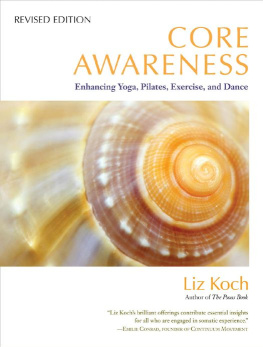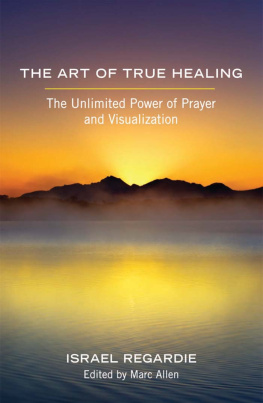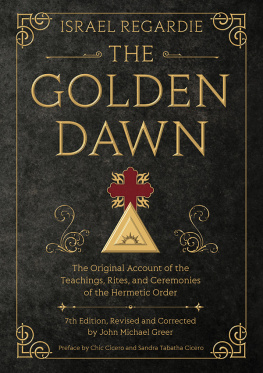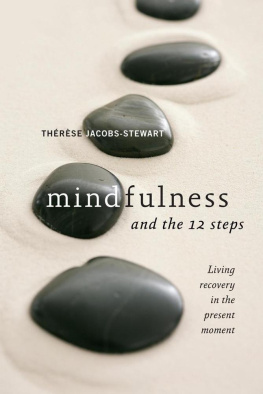

This revised edition published in 1981 by
Samuel Weiser, Inc.
Box 612
York Beach, ME 03910
Third printing, 1992
Originally published under the title, Twelve Steps to Spiritual Enlightenment, in 1969 by the Sangreal Foundation.
First Samuel Weiser paperback edition, 1976
Copyright 1976 Israel Regardie
All rights reserved. No part of this publication may be reproduced or transmitted in any form or by any means, electronic or mechanical, including photocopy, without permission in writing from Samuel Weiser, Inc. Reviewers may quote brief passages.
Library of Congress Cataloging-in-Publication Data
Regardie, Israel.
The one year manual / by Israel Regardie.
p. cm.
Includes bibliographical references.
1. Spiritual exercises. 2. Magic I. Title.
BF1621.R43 1993
291.4'4--dc20
92-35344
CIP
ISBN0-87728-489-X
BJ
Cover painting is entitled, The Ascent, copyright 1990 Rob Schouten.
Printed in the United States of America
The paper used in this publication meets the minimum requirements of the American National Standard for Permanence of Paper for Printed Library Materials Z39.48-1984.
www.redwheelweiser.com
www.redwheelweiser.com/newsletter
Contents
Gratefully dedicated to
CARR P. COLLINS, JR.
who suggested and inspired this book, and without whom it would never have been written or completed!
PREFACE
THIS BOOK WAS FORMERLY entitled Twelve Steps to Spiritual Enlightment. Insofar as it was intended to be a manual delineating a course of practical study to extend over a period of at least twelve months, that title seems rather presumptuous. It had been my original intention to entitle it The One Year Manual. The title describes the nature of the book without any pretensions, assumptions or exaggerated claims.
Several experiences wrankled in my mind not only about the title but by the Christian references which were really quite foreign to my outlook. The first blow came when a psychologist living in Florida corresponded with me about a couple of my other books. Then she chanced upon the Twelve Steps to Spiritual Enlightenment. It so annoyed her that she wrote me most emphatically about her disapproval. There was nothing I could do honestly but to write back agreeing with her and admitting that I had no great liking for these Christian references either.
Sometime after that there was an editorial in a small British magazine Agape with whose editor there had been occasional correspondence. This editorial was most critical of both me and the book. It made me realize the enormity of my error and how far I had strayed from what was really acceptable to me.
There were several others that hammered home the point.
The error consisted simply of being too susceptible to the suggestions of well-meaning friends. It was their contention that the inclusion of Thelemic, Egyptian and other pagan allusions, might prove difficult to accept by some readers. Today it bothers me somewhat to admit that I was swayed by this specious argument. It was also suggested that if Christian items were to replace those mentioned above it would insure a wider circulation and sale of this book.
The outcome of all this is the revision of the book in the form originally intended before close and dear friends suggested modifications of one kind or another. Most of the material is identical with that in Twelve Steps. The slant, however, is totally different and may appeal to a different group of students. In its present form it adheres more closely to my original intention, and so is more to my own liking.
As previously stated, this manual delineates a course of practical study to extend over a period of at least twelve months. Theoretically, it is designed for the ideal student. Since, however, there is no such ideal, each student represents a different problem. Each is a unique personality with his own character-structure, his own idiosyncracies and his own way of solving problems in a certain amount of time. No two students are alike.
Under these circumstances, it must be self-evident that though designed for a twelve month period, it is more likely that the student may need to spend a good five years working with these simple methods. Some exercises may be completed and mastered in the month prescribed. Other procedures may require anywhere from three months to a year before any real mastery or noticeable result is achieved. It is important therefore to stress patience as a supreme necessity where this course of study is concerned. Some exercises have as a secondary gain the acquisition of a higher degree of patience.
These simple injunctions require little elaboration. Make haste slowly would be the ideal maxim for every student to adopt when starting to study and practice this scheme. It will pay optimal dividends in the end.
It would be of infinite value if, while working these exercises, the student kept what I propose to call a Day Book. In accounting procedures, the Day Book is a journal in which are entered all the transactions of the day, regardless of what they are. In this Day Book, or Work Book, that we are considering, the student should keep a detailed record of every practice that he engages in. Immediately after performing every exercise, he should take a couple of minutes from his next task in order to make entries in this Day Book. He should record the date and time of the day, the particular exercise he practiced, how many minutes were devoted to it, what he felt about the manner in which he proceeded, any experiences that may have occurred, and finally his evaluation of the period itself. It might even be worthwhile recording some extraneous data, such as the kind of weather prevailing, the temperature within the room in which he is working and the general emotional mood, etc.
If this Day Book is scrupulously kept, at the expiration of a year, regardless of whether it is seen or examined by any other person, the student will eventually be able to look at his efforts with fair objectivity. It may come as a distinct surprise to read through some of his early comments on his first experiences and efforts. He may even perceive a psychological pattern running through all his exercises and whatever results accrue from them. No little insight can be obtained from this. The keeping of the Day Book, therefore, is a matter of prime importance. Meticulous attention should be given to it right from the start.
The occult student, at the outset of his studies, is besieged by hundreds of books describing dozens of practices of every kind. They promise, directly or otherwise, to bring him to the very heights of spiritual attainment, no matter how that attainment is defined. But by the very wealth of material is he overwhelmed. And the result is that, generally speaking, he does nothing except read. Reading does very little to bring one to any kind of realization of one's divine nature.
In this manual, it is proposed to burden the student with very little theory, but to outline a course of procedure which, persisted in for at least twelve months, will bring him a good way along the Path. This course of procedure will describe a certain number of classical practices which are calculated to produce certain types of results. There will be no attempt to dazzle him with startling but vague promises, with fantasies of great achievements, with misleading claims leading nowhere.
Next page










